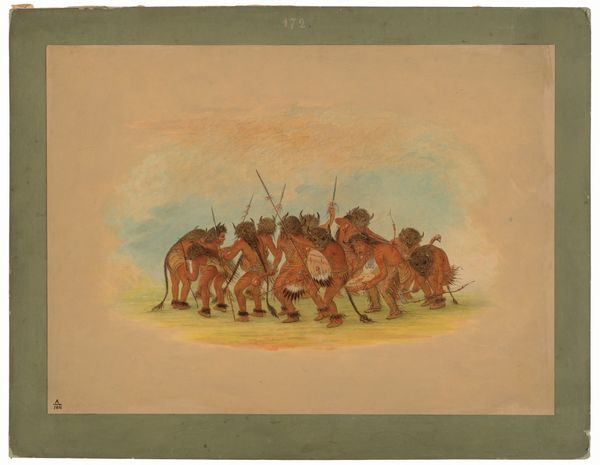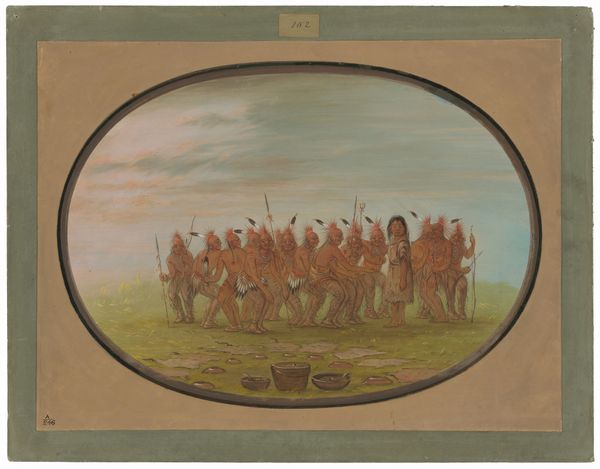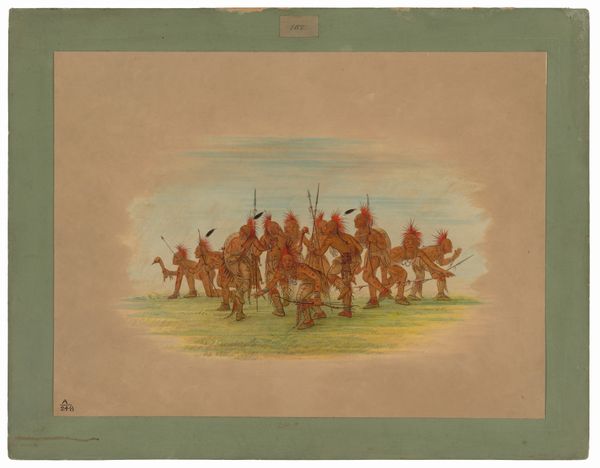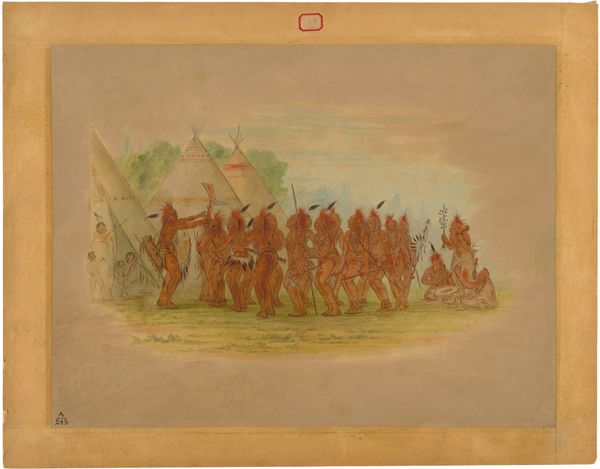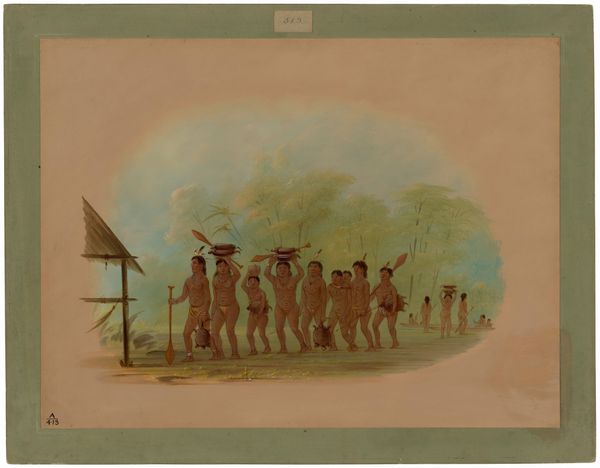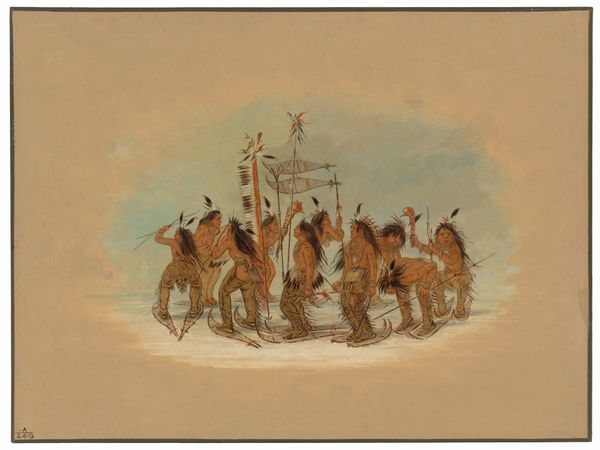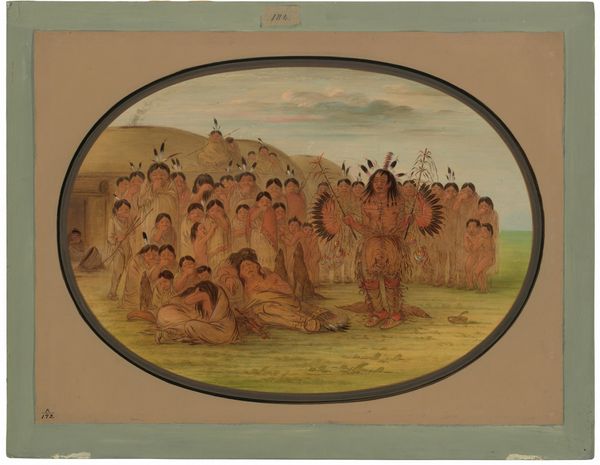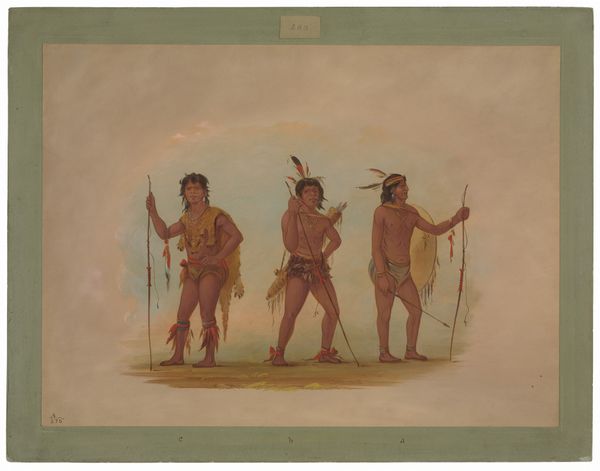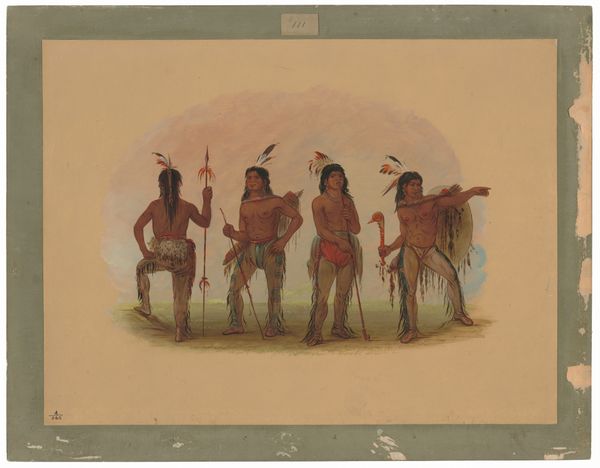
painting, gouache
#
water colours
#
painting
#
gouache
#
watercolour illustration
Dimensions: overall: 46.7 x 62.2 cm (18 3/8 x 24 1/2 in.)
Copyright: National Gallery of Art: CC0 1.0
Editor: We're looking at George Catlin's "Dog Dance - Sioux" from 1861, done in watercolor. The scene feels... anthropological, like a record of a ritual, almost clinical in its depiction despite the apparent energy of the dancers. What's your take on it? Curator: That's a very astute observation. Consider Catlin's historical context. He presented himself as a chronicler of Native American life during a period of aggressive westward expansion and cultural disruption. Think about the power dynamics inherent in his gaze as a white artist depicting indigenous practices. This painting isn't just an innocent record; it’s a mediated representation shaped by his own cultural biases and the expectations of his audience. Do you notice anything specific about the way he frames the subjects or perhaps what details he chooses to emphasize or omit? Editor: I see that he focuses on the figures themselves, their costumes, their postures, but the landscape is very minimal. Almost like a staged tableau rather than a living community. Curator: Precisely! The simplified background pushes the figures forward, creating a sense of spectacle for a presumed viewer unfamiliar with, and perhaps othering of, the Sioux culture. Think about how museums and galleries, even today, present Indigenous art. What narratives are prioritized, and whose voices are amplified? How does that affect our understanding of this image and the culture it represents? Editor: So, the image itself, its creation, and even its display are all wrapped up in a larger history of cultural representation and power. Curator: Exactly. This painting provides a snapshot into a moment of encounter and interpretation—a moment fraught with historical complexities and one that continues to shape how we understand Indigenous cultures even now. By questioning the motives and context surrounding images like this, we can begin to deconstruct prevailing stereotypes. Editor: That makes me see it in a completely new light! I’ll definitely be thinking more critically about whose story is being told, and *how*, when looking at similar works in the future. Curator: Excellent! That's the power of looking at art through a historical lens.
Comments
No comments
Be the first to comment and join the conversation on the ultimate creative platform.



